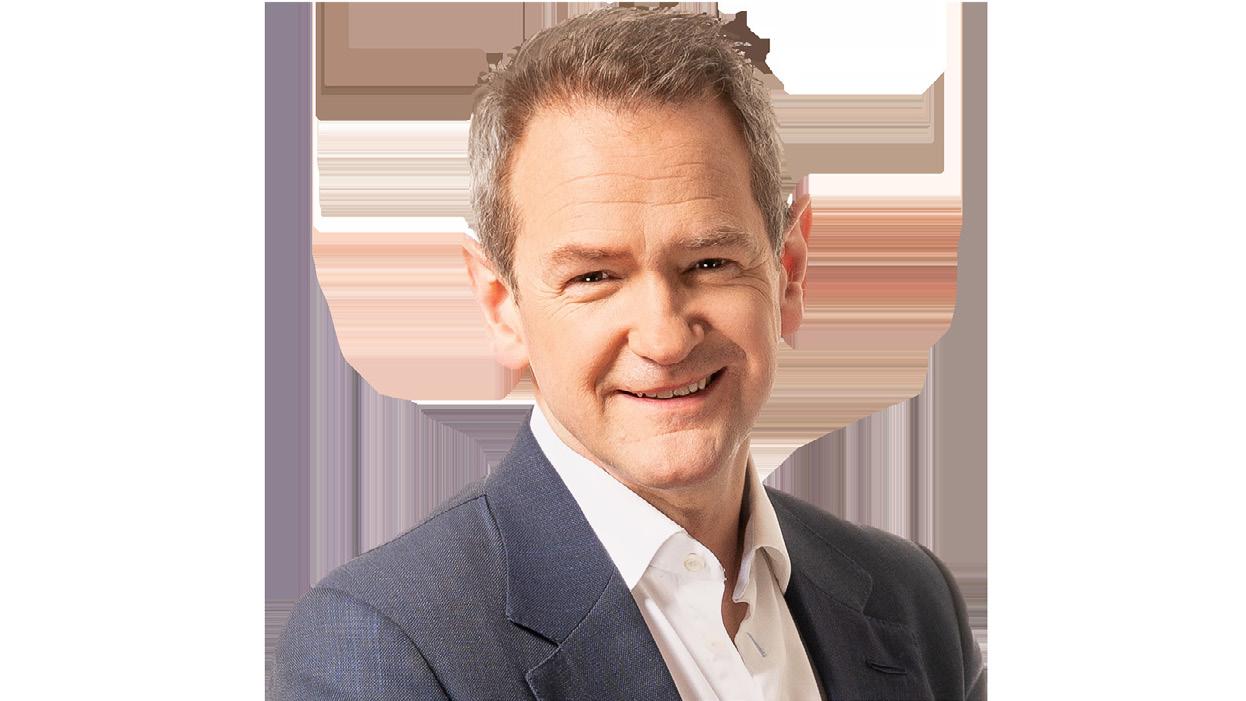COLOURFUL



Usher Hall, Edinburgh
Fri 3 Mar 2023 7.30pm
City Halls, Glasgow
Sun 5 Mar 7.30pm




















































































































































































































































































































































Saxophonist Jess Gillam is one of those artists who can light up a room with anything she plays. Tonight, together with conductor Gemma New, she champions Glazunov’s luscious Saxophone Concerto, the glowing heart of a concert that dances through Gershwin’s Paris, Ligeti’s fantasy world and Mussorgsky’s spectacular musical picture gallery: witches, troubadours, luminous skulls and dancing chickens, all brought to life in some of the most dazzling music you’ll ever hear and accompanied by live artistry from James Mayhew.
LIGETI Prelude to the First Scene and Intermezzo from Le Grand Macabre [2’]
GERSHWIN An American in Paris [17’]
GLAZUNOV Concerto in E flat major for Alto Saxophone and Strings Op109
MILHAUD Scaramouche Op165c [9’]
MUSSORGSKY (orch. Ravel) Pictures at an Exhibition [29’]
Gemma New Conductor
Jess Gillam Saxophone
James Mayhew Artist
Royal Scottish National Orchestra
USHER HALL, EDINBURGH
Fri 3 Mar 2023 7.30pm
CITY HALLS, GLASGOW
Sun 5 Mar 7.30pm
The Glasgow performance will be recorded for the RSNO Archive. Supported by the Iain and Pamela Sinclair Legacy.
If viewing these notes at the concert, please do so considerately and not during performances. Please silence all mobile telephones and alerts, and refrain from taking photographs, without flash, until the end of each piece.
[14’]
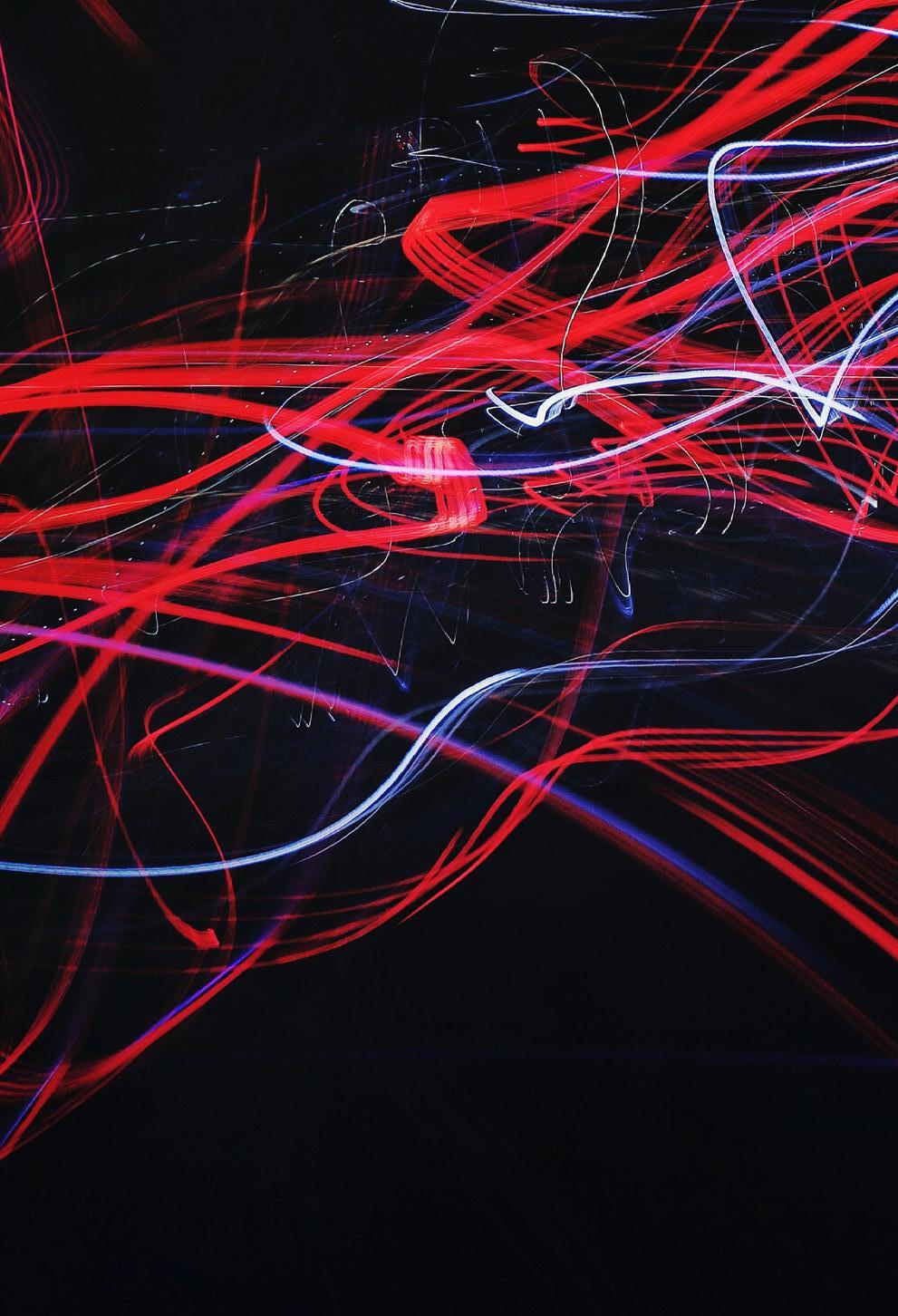
EDN Fri 10 Mar
GLW Sun 12 Mar
Gershwin Cuban Overture
Copland Clarinet Concerto
Rachmaninov Symphonic Dances
John Wilson Conductor
Timothy Orpen Clarinet
Fittingly, therefore, we welcome illustrator James Mayhew on stage, live painting during Mussorgsky’s Pictures at an Exhibition. James has been working with the RSNO across our Engagement programmes, Gaspard’s Foxtrot and Gaspard’s Christmas, and is currently touring with this year’s National Schools Concert Programme Once Upon A Tune.
In Edinburgh this week we also welcome students from St Mary’s Music School for a pre-concert performance. We are privileged to continue working with a variety of schools and music education organisations as part of our successful Engagement programme.
Welcome to this latest concert in the RSNO’s 2022:23 Season, for which we are absolutely delighted to have Jess Gillam making her debut with the Orchestra. Some of you may be familiar with Jess from her BBC Radio 3 programme This Classical Life, and you may well have seen her perform with the National Youth Orchestra of Scotland last Season. Tonight, she returns to Scotland alongside conductor Gemma New, performing Glazunov’s Saxophone Concerto.
This evening I have the rare opportunity to introduce not one but two pieces of music featuring the unique sound of the car-horn! From the absurd to the sublime, there’s no better way to experience the flexibility of the RSNO than by presenting the percussion section in Ligeti’s madcap prelude to his opera Le Grand Macabre and the atmospheric urban landscape of Gershwin’s An American in Paris Famously inspiring an Oscar-winning film of the same name, Gershwin’s work is just one example of how this weekend’s concerts showcase composers and artists inspired by different genres and artistic mediums.
Congratulations to the six Notes from Scotland participants whose brand-new compositions were performed by the RSNO Chamber Ensemble last month. It is vital that we continue to support music education and emerging talent, and I’m heartened that the RSNO continues to be joined by artists such as Jess, who are doing so much to break down traditional barriers to classical music.
I hope you have a thoroughly enjoyable evening.
Alistair Mackie CHIEF EXECUTIVE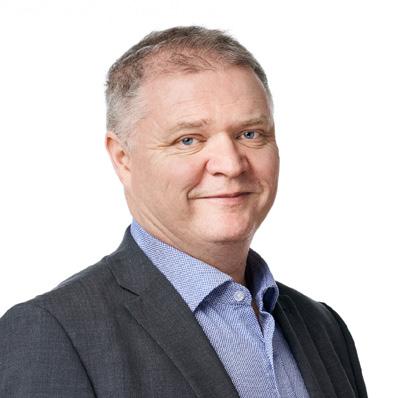





































































a-calling in the shape of the preposterous, self-important Nekrotzar, announcing the end of the world. Unluckily for him, he gets drunk and the apocalypse probably doesn’t happen – or maybe it does, or perhaps it already has? Everyone is too hungover to notice or care. The humans stagger out of the wreckage at the end with the chirpy moral: ‘Fear not to die, good people all! Live merrily in cheerfulness!’ Death is inevitable, ubiquitous, compulsory –and therefore boring and irrelevant, and best ignored.
Full opera: Stockholm, 12 April 1978
Prelude and Intermezzo: 2 minutes
Probably only a person who came from Transylvania could have produced the extremely odd opera (or ‘anti anti-opera’, as he preferred to call it) Le Grand Macabre. György Ligeti knew a bit about madness, absurdity and death: a Hungarian Jew, born in 1923, his entire family was wiped out at Auschwitz – and then he endured the idiotic circus of communism in Hungary before escaping in 1956. But he kept his puerile sense of humour, and took a fine revenge when he came upon Michel de Ghelderode’s La balade du grand macabre, a 1934 grotesque fantasy in the phantasmagorical Flemish tradition of Bosch and Breughel.
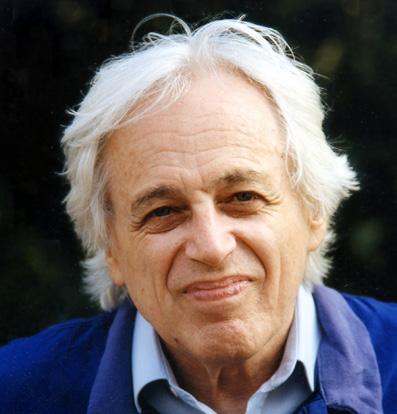
Indeed, the action unrolls in ‘Breughelland’, a freaky disaster zone inhabited by a child prince, a hysterical police chief, a shambling drunk called Piet the Pot, two permanently inflamed lovers and various other misfits. Death comes
The music of this opera – paradoxically, one of the most frequently performed of ‘modern’ operas, despite its extreme avant-garde nature – is all-encompassing. The composer called it a ‘flea market’ and claimed to have based it variously on Monteverdi’s The Coronation of Poppea and Verdi’s Falstaff, with musical references to many other operas. In truth, listeners are more likely to revel in the absurdity of the prelude for 12 tuned car-horns, the arrayed percussion (including Swanee whistle and duck-quacker), the overpowering textures of the closing passacaglia, the seismic surround-sound orchestral mastery.
Here, in the Prelude to the First Scene and Intermezzo, we have those car-horns. It’s a mad parody of the fanfare that opens the first of all well-known operas, Monteverdi’s Orfeo, and is played by three percussionists each equipped with four (two for the hands, two for the feet) old-fashioned bulb-horns. The tuning is not specified, though the relative pitch of the horns is.
Yes, it’s all very silly – but Le Grand Macabre’s silliness is in a grand, treasurable and perhaps endangered tradition: talking about the most serious things in the least serious way possible.
© Robert Thicknesse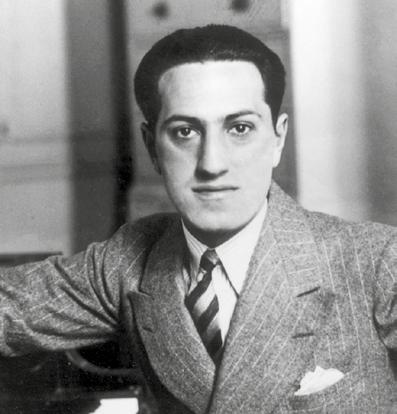
By the time George Gershwin had premiered
FIRST PERFORMANCE
New York, 13 December 1928
DURATION 17 minutes
An American in Paris in 1928, he was already one of the most famous American composers of his age, known most widely for his works for Broadway and Hollywood, but also no stranger to Carnegie Hall, where Walter Damrosch and the New York Philharmonic gave its first performance. Porgy and Bess, Gershwin’s genrebusting jazz opera, was in gestation, and he already had two fully fledged classical works under his belt: Rhapsody in Blue (orchestrated from Gershwin’s piano-sketched ensemble parts by Ferde Grofé, jazz-band style) and the Piano Concerto in F. By the time he died in 1937, aged just 38 from a brain tumour, Gershwin was already well down the road to an inclusive re-conception of American classical music. As Irving Berlin said, after hearing Rhapsody in Blue, ‘He’s the only songwriter I know who became a composer.’
A brilliant pianist, Gershwin came to classical music young, growing up steeped in the musical traditions of the Yiddish Theatre district and the African American jazz clubs of Harlem, frequently sneaking into rehearsals at Carnegie Hall. Aged 15, he became a ‘song plugger’ – a player of tunes – in a publishing house on Tin Pan Alley before quickly making his name as a songwriter. The music came to him from all around, as if his mind was a melting pot of sounds and influences, the results rapidly coalesced onto the keyboard.
Keen to create his own orchestral scores, Gershwin had first gone to Paris in 1924 to try to study with Maurice Ravel, but the composer, much taken with Gershwin’s brilliance, declined, fearing, so he said to the teacher Nadia Boulanger, that he might ruin his talent by teaching him ‘technique’. As he said to Gershwin, who later took him round the jazz
bars of New York, ‘Why be a second-rate Ravel, when you can be a first-rate Gershwin?’
If Rhapsody in Blue was a ‘musical kaleidoscope of America’, conceived in short order on a clanking train to New York (‘I frequently hear music in the very heart of noise,’ Gershwin once explained), then An American in Paris, a ‘Tone Poem for Orchestra’, scattered mirrored parts of that American kaleidoscope on the streets of the French capital, replete with honking car-horns that Gershwin had himself bought in a Paris shop, and a famous bluesy trumpet solo to denote his suddenly homesick, and possibly slightly tipsy, American. ‘My purpose here is to portray the impressions of an American visitor in Paris as he strolls about the city, listens to the various street noises, and absorbs the French atmosphere,’ Gershwin, fully enamoured of artistic Paris, wrote on its premiere. Its infectious rhythms were an instant hit with audiences, if not so much with the critics.
‘It’s not a Beethoven symphony, you know,’ Gershwin responded, unfazed. In 1951 its success was further cemented when Gene Kelly and Leslie Caron put physical presence to Gershwin’s imagined ‘rhapsodic ballet’ in the eponymous Oscar-winning film.
© Sarah Urwin Jones8 Feb Helensburgh-born inventor John Logie Baird broadcast a transatlantic television signal from London to Hartsdale, New York
19 Apr The last section of the original Oxford English Dictionary was completed and published
7 May The Representation of the People Act lowered the voting age for women in the UK from 30 to 21
15 May Disney Studios in Los Angeles released the animated short Plane Crazy, the first appearances of Mickey and Minnie Mouse
9 Jun Australian aviator Charles Kingsford Smith and his crew completed the first flight across the Pacific Ocean
7 Jul The first sliced and wrapped loaf was sold in Chillicothe, Missouri, using a machine invented by Otto Frederick Rohwedder
27 Jul Radclyffe Hall’s controversial novel The Well of Loneliness was published in London
31 Aug Bertolt Brecht and Kurt Weill’s The Threepenny Opera opened in Berlin
28 Sep Scottish physician Alexander Fleming first observed a bacteria-killing mould, later known as penicillin
1 Oct In the Soviet Union, Joseph Stalin launched the first five-year economic plan
6 Nov Republican Herbert Hoover was elected the 31st US President
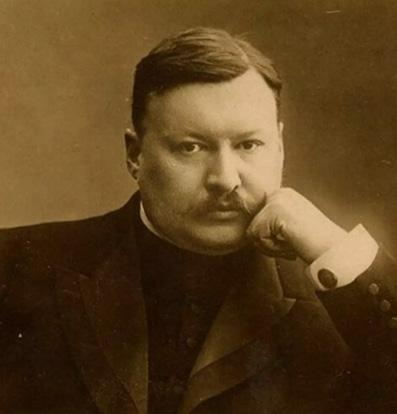
When Alexander Glazunov put pen to paper in March 1934 for his Saxophone Concerto, the instrument was treading an interesting line between newcomer and established, classical and jazz. It had first been developed in Paris in the 1840s by Adolphe Sax, who came from a family firm making clarinets and brass instruments. Sax’s new brass/reed amalgam was adopted by French military bands after around 1845. Next, French composers spotted its colouristic potential, and it found its way onto classical concert stages, and thus into the hallowed halls of the Paris Conservatoire, Sax becoming the institution’s first Professor of Saxophone in 1870.
Nyköping, Sweden, 25 November 1934
DURATION 14 minutes
Onwards to the turn of the century, and jazz and swing bands began incorporating the instrument. Yet while on the face of it this all represented a pretty swift ascent, by the time German saxophone virtuoso Sigurd Rascher approached Glazunov for a concerto in 1934, classical composers were still largely treating it as a piece of interesting orchestral colour, rather than as a classical solo instrument in its own right, meaning a paucity of decent solo repertoire.
Glazunov was a canny choice for Rascher to target (and target is the word, Glazunov describing that he embarked on the work ‘under the influence of attacks rather than requests’). For starters, he had been a favoured pupil of Russia’s symphonic colourist par excellence, Rimsky-Korsakov, and produced vivid orchestral scores himself. He had also been a resident of the saxophone’s birth city since 1928, having emigrated from Russia. And while the jazz age had thoroughly made its mark on French musical style by this point – Ravel’s Piano Concerto in G of 1931 being a prime example – Glazunov ’s language was
still firmly that of late-19th-century Russian Romanticism, perfect for a saxophonist wanting to hammer home his instrument’s classical credentials.
The resultant work, using a string rather than a full orchestra, sees Glazunov exploring the saxophone’s range and timbres, complementing and contrasting them with myriad string colours, and with an overall graceful freshness that contains no hint of his advanced years. Cast in traditional threemovement concerto form – albeit with the three running from one to the next without a break – it opens strikingly with the strings presenting the theme in sober, Russiansounding unison octaves. Soon, though, the harmonies and textures flower out, and the saxophone floatingly restates the theme, newly Frenchified, in more embellished form. From here, the feel of weightless freedom continues via frequently changing tempi and rich rhythmic variety. A second unison statement, followed by a brief transition passage, bring us to the central triple-time Andante. This concludes with a solo cadenza, after which comes another brief transition, before the saxophone tips us into the concluding Allegro, opening on a rhythmically dancing idea in C minor that gets picked up fugally by the strings. Major tonality eventually reappears, as does material from the first movement. The work culminates in a triumphant saxophone flourish.
© Charlotte Gardner10 Jan A ten-year non-aggression declaration was signed by Nazi Germany and the Second Polish Republic
13 Mar Gangster John Dillinger and his gang stole $52,000 from the First National Bank in Mason City, Iowa
21 Apr The Daily Mail published Robert Kenneth Wilson’s so-called ‘surgeon’s photograph’ of the Loch Ness Monster, admitted by him as a hoax in 1994
23 May Outlaws Bonnie and Clyde were ambushed and killed by police in Bienville Parish, Louisiana
14 Jun Adolf Hitler and Benito Mussolini met for the first time, at the Venice Biennale exhibition
30 Jun - 2 Jul In the Night of the Long Knives, the Nazis carried out a series of political murders
2 Aug On the death of President Hindenburg, Adolf Hitler became head of state, or Führer, of Germany
16 Oct The Long March, a military retreat of the People’s Liberation Army of the Chinese Communist Party to evade the pursuing National Army, began
2 Dec The Quintette du Hot Club de France, led by guitarist Django Reinhardt with violinist Stéphane Grappelli, first performed in Paris
Vildrac. Based on the 17th-century play of the same name by Molière, and featuring commedia dell’arte characters, this had as its main character the servant Sganarelle, who has to act as himself while also masquerading as his twin ‘doctor’ brother, in order to save his master’s true love from being married against her will to an elderly man – cue much slapstick subterfuge! The original small-forces scoring was in fact for clarinet or saxophone with piano. The central Modéré’s music was plucked from the overture to Milhaud’s 1936 score for Jules Supervielle’s play, Bolivar
Paris, 1 July 1937
DURATION 9 minutes
A brilliant re-casting of existing material, Milhaud’s three-movement orchestral suite with saxophone soloist, Scaramouche, began life as a two-pianos work for Marcelle Meyer and Ida Jankelevich, performed as part of the Paris International Exposition in the summer of 1937. The music for this piano work came in turn from two sets of incidental music for theatre Milhaud had recently penned. For its joyous first and third movements, the music was pretty much still wet on the page, drawn as it was from Le médecin volant (The Flying Doctor), Théâtre Scaramouche’s production of that year of a children’s play by Charles

The opening Vif movement would have been a perfect fit for that commedia dell’arte caper, serving up and then contrasting a succession of short, natty, rhythmically toe-tapping melodic ideas, none of which would feel out of place in a Looney Tunes cartoon: scurrying upwards and downwards scales; a sequential figure; a march comprised of four repeated notes, followed by dotted rhythms, that sounds very much like ‘Ten green bottles hanging on a wall’ – all couched in a spicy blend of tonal and polytonal harmony. Next comes the more romantic Modéré, moving from a slow march to a more flowing motif, then to an even more lyrical central section that lilts along in 6/8 time, before the first two themes return, now woven together. The final movement is an ebullient Latin American samba which draws brilliantly on Milhaud’s 1917-19 period in Brazil as a secretary at the French Embassy. Polytonality and jostling multi-rhythms are once more at the fore, before everything concludes with a merry crash.
© Charlotte GardnerJess is the first saxophonist to be signed exclusively to Decca Classics and both of her albums reached No1 in the UK Classical Music Charts. Her debut album was listed in The Times Top 100 Albums of 2019. She has been the recipient of a Classic BRIT Award, has been nominated for The Times Breakthrough Award and was awarded an MBE in the Queen’s Birthday Honours list 2021 for Services to Music.
Jess Gillam is animating the music world with her outstanding talent and infectious personality. She has been forging her own adventurous path since she shot to fame, becoming the first saxophonist to reach the finals of BBC Young Musician and the youngestever soloist to perform at the Last Night of the Proms. Passionate about inspiring and bringing joy to people through music, Jess invites audiences on journeys of musical discovery through her electrifying performances and eclectic programming.
As well as performing around the world, Jess is a presenter on TV and radio. She became the youngest-ever presenter for BBC Radio 3 with the launch of her own weekly show, This Classical Life, which in 2020 won the ARIA Award for Best Specialist Music Show. She has also been a guest presenter for BBC Radio 2 and co-hosted a miniseries for BBC Radio 4’s Today Programme. Keen to explore the creative output of her home county, Jess presented a series of Cumbrian Chats on BBC Radio Cumbria.
A free spirit in style and character, Jess is an advocate for the power of music in society. During lockdown she formed her Virtual Scratch Orchestra, inviting musicians of any standard to come together to play music virtually with her. Over 2,000 people from around 30 countries took part across the two projects, aged 2 to 94 and playing a huge range of instruments. Jess is a patron for Awards for Young Musicians and London Music Fund, and enjoys working and performing with young musicians.
Jess has performed in prestigious concert halls and with world-class orchestras around the globe. She also tours with her newly formed Jess Gillam Ensemble, bringing together musicians who share her bold, uplifting and open-minded approach.
Jess is currently Artist in Residence at the Wigmore Hall and is a European Concert Hall Organisation (ECHO) Rising Star, which sees her performing at many of the top concert halls across Europe. She is a Vandoren UK Artist and became the youngest-ever endorsee for Yanagisawa saxophones aged just 13. She also continues to promote her own concert series, bringing international talent to her home town of Ulverston.

‘He likes what is coarse, unpolished and ugly.’ Tchaikovsky’s withering appraisal of his compatriot and colleague Modest Mussorgsky is hardly flattering. And yet there’s a kernel of truth in it too. For in his music, Mussorgsky did indeed favour the rawness of direct expression in a way that contrasts starkly with the luscious Romanticism of Tchaikovsky. And it’s shown nowhere more clearly than in his powerful suite Pictures at an Exhibition
Paris, 19 October 1922
DURATION 29 minutes
Promenade
Gnomus
Promenade
The Old Castle
Promenade
Tuileries
Bydlo
Promenade
Ballet of the Chicks in their Shells
Samuel Goldberg and Schmuÿle
Limoges: The Market
Catacombs – Con mortuis in lingua mortua
The Hut on Fowl’s Legs (Baba Yaga)
The Great Gate of Kiev
Maybe it had something to do with his background. Despite the young Modest showing promise as a pianist and composer, his parents decided on a military career for the lad. He resigned from the army at the first opportunity, however, and fled back to music, taking composition lessons from composer Mily Balakirev and struggling to support his musical activities by working as a low-grade civil servant (despite being twice fired from the post). He lived in a commune, and infused his music with the heady, radical ideas he came into contact with there – that art should reflect the grittiness of real life and search for the deepest truths.
Mussorgsky found a soulmate in the visual artist Viktor Hartmann, who shared his ideals in the worlds of painting, design and architecture. The two men were introduced in 1862 by the art critic and historian Vladimir Stasov, and they quickly became close friends, drawn together by a freewheeling, progressive creative spirit. So when Hartmann suddenly died in 1873 following a heart attack, at the age of just 39, the composer was devastated.
Stasov set about organising a memorial exhibition of Hartmann’s drawings, paintings and designs, and when Mussorgsky visited the exhibition in spring 1874 he was deeply moved – and immediately inspired, rushing to work on a set of piano pieces based on Hartmann’s images,

which he completed on 22 June. ‘Sounds and ideas fill the air,’ he wrote to Stasov, ‘and I can barely scribble them down fast enough.’ His intention, he continued, was to depict himself as though he were a visitor ‘roving through the exhibition, now leisurely, now briskly, in order to come closer to a picture that had attracted his attention, and at times sadly thinking of his departed friend’.
Mussorgsky’s Pictures at an Exhibition is now one of the best-loved memorial pieces in the repertoire – but it was entirely unknown in the composer’s lifetime. It was almost certainly never played while Mussorgsky was alive, and the piano score was only discovered among Mussorgsky’s belongings after his death by his musical executor, Nikolai Rimsky-Korsakov, who set about editing the manuscript and arranging for it to be published in 1886. Even then, however, it generated little interest from pianists.
But almost immediately, the work was seized upon by composers keen to re-cast Mussorgsky’s piano writing across an orchestral canvas. The first orchestration came as early as 1891, but Maurice Ravel’s masterful reimagining came much later, in 1922. It was a commission from conductor Serge Koussevitzky for his Boston Symphony Orchestra (ironically, Koussevitzky wasn’t even aware of Pictures until Ravel drew his attention to it). It quickly became a much-loved orchestral showpiece – partly because of Ravel’s grand, glittering orchestration, and partly because Koussevitzky had cannily secured exclusive performance rights for five years, during which time he turned it into a staple of the Boston repertoire, in concert and in newfangled recordings, heard all over the world. However, despite his sumptuous reimagining of Mussorgsky’s rough-edged piano pieces, Ravel remains remarkably faithful to the original – only in the final Great Gate of Kiev
does he allow himself the indulgence of adding a few notes of his own.
Mussorgsky’s masterstroke is to introduce a majestic Promenade representing himself strolling between the artworks. Ravel gives this opening theme to glowing choirs of brass, as if to summon us to attention. Hartmann’s first picture is Gnomus, a gnome-shaped nutcracker he designed as a children’s Christmas present, and which Mussorgsky depicts in bad-tempered outbursts alternating with passages of ominous calm.
Following another, more reflective, Promenade for solo horn and woodwind, Mussorgsky moves on to The Old Castle, based on a Hartmann watercolour of a troubadour serenading his loved one by moonlight at an ancient edifice he visited in Italy. Ravel gives the main melody to a doleful solo saxophone.
Another Promenade seems to break off in mid-flow, leading straight into the miniature scherzo Tuileries, depicting children playing and squabbling in the famous gardens of Paris, the city where Hartmann had lived for a time. With barely a break, Mussorgsky moves on to Bydlo, a depiction of a lumbering Polish ox cart that begins quietly in the distance with a melody Ravel assigns to a solo tuba, before building to a mighty orchestral climax as the cart draws nearer.
A quiet, rather hesitant Promenade finds Mussorgsky somewhat in shock after the power of Bydlo, but he soon finds solace in the chirruping woodwind of the delicate Ballad of the Chicks in their Shells, based on Hartmann’s costume designs for the 1876 St Petersburg ballet Trilby
Mussorgsky owned two drawings by Hartmann, one entitled A Rich Jew Wearing a Fur Hat and the other Poor Jew: Sandomierz, and he seems
to have imagined them together in Samuel Goldberg and Schmuÿle, which describes an argument between the two men, the first wealthy and pompous (with an expansive melody in low strings), and the second poor and querulous (a stuttering figure on muted trumpet).
Mussorgsky moves on to the bustle and gossip of Limoges: The Market, before plunging us into the sepulchral darkness of the Parisian Catacombs, ancient underground bone-filled tombs that Hartmann had visited while living in the French capital. Ravel preserves the original’s raw intensity in a sparse orchestration for brass alone, alternating loud and soft as the sounds echo around the endless vaults. The rest of the orchestra joins for Con mortuis in lingua mortua (With the dead in a dead language), which transfigures the Promenade theme into an eerie invocation.
The terrifying child-eating witch of Russian folklore, Baba Yaga, breaks the calm with the fierce, unpredictable music of The Hut on Fowl’s Legs, based on Hartmann’s elaborate design for a clock inspired by her chicken-footed home, before even she is halted in her tracks by the grand vision of The Great Gate of Kiev Hartmann’s picture is a design for an entrance gate to the Ukrainian capital that he submitted in an architectural competition in 1866. As well as two brief, quiet chorales based on Russian orthodox chant, Mussorgsky brings back his Promenade theme as part of the movement’s grand culmination, and Ravel ensures a sense of pomp and ceremony with pealing bells and thundering drums.
© David Kettle11 Jan The first-ever insulin injection was given to 14 year-old Leonard Thompson at Toronto General Hospital
28 Feb The United Kingdom ended its protectorate over Egypt, granting the country nominal independence
18 Mar In British India, Mahatma Gandhi was sentenced to six years in prison for sedition
30 May The Lincoln Memorial, built to honour the 16th US President, was dedicated in Washington, DC
11 Jul The Hollywood Bowl open-air concert venue officially opened
18 Oct The British Broadcasting Company (Corporation from 1926) was formed
28 Oct The March on Rome brought Benito Mussolini and his National Fascist Party to power
1 Nov After 600 years, the Ottoman Empire was abolished and its last sultan, Mehmed VI, left for exile in Italy
26 Nov Howard Carter and Lord Carnarvon became the first people to see inside Pharaoh Tutankhamun’s tomb in more than 3,000 years
6 Dec The Irish Free State was established as a dominion of the British Empire

and The Orchestra of the Music Makers from Singapore. He has performed all across the UK, bringing classics like The Four Seasons, Peter and the Wolf, Scheherazade, The Planets and Pictures at an Exhibition to life, in art. He has presented two online series of Drawn To Music for the BBC, and is currently touring with the RSNO to present the stories and music from Once Upon a Tune in concerts for thousands of schoolchildren across Scotland.
James Mayhew is an award-winning artist and author. He trained as an illustrator at Maidstone College of Art, followed by further studies in set design. His first book, Katie’s Picture Show, was published in 1989, beginning the longrunning series about a child’s adventures in an art gallery. Since then he has published over 70 illustrated books, including the Ella Bella Ballerina series, and his latest book, the Carnegie Medal-nominated Once Upon A Tune – Stories from the Orchestra.
Alongside his work in publishing, James works with a variety of musicians and orchestras, presenting highly acclaimed concerts that incorporate art, created live on stage, in time to the music. Using inks and gouache in bright colours and bold brush strokes, he strives to capture the essence of programmatic music in visual form. His collaborators include the RSNO, BBC National Orchestra of Wales, London Mozart Players, Britten Sinfonia, Piccadilly Symphony Orchestra, Doric String Quartet,
For many years James taught illustration on the UK’s first Masters programme in Children’s Book Illustration at Cambridge School of Art (Anglia Ruskin University) and continues to mentor many students. In 2012 he was Illustrator in Residence at the Edinburgh Book Festival, and in 2013 he was co-curator for the Cheltenham Music Festival.
Alongside his own stories, James is also the illustrator of Gaspard the Fox by Classic FM’s Zeb Soanes (adapted as a concert work by Jonathan Dove, for the RSNO), Joyce Dunbar’s Mouse & Mole series, and the Mrs Noah books by Jackie Morris. He is a recipient of the New York Times Illustration Award, four times nominated for the Carnegie Medal for Illustration, and in 2022 won the inaugural Polari Prize for an LGBTQ+ children’s book for Nen and the Lonely Fisherman (with author Ian Eagleton).
James lives in Suffolk with his husband, Toto, where the big skies and gentle light are perfect for artists.
New regularly appears with top orchestras in North America and Europe, having conducted the New York Philharmonic, Philadelphia Orchestra, Cleveland Orchestra, Los Angeles Philharmonic, San Francisco Symphony, National Symphony Orchestra, St Louis Symphony, Detroit Symphony Orchestra, Atlanta Symphony Orchestra, Baltimore Symphony Orchestra, Minnesota Orchestra, Orchestre Symphonique de Montréal, WDR Sinfonieorchester Cologne, BBC Philharmonic, Hallé Orchestra, Helsinki Philharmonic Orchestra, Helsingborgs Symfoniorkester, Ulster Orchestra and Orchestre National d’Îlede-France, as well as the Sydney Symphony Orchestra.
Sought after for her insightful interpretations and dynamic presence, New Zealand-born Gemma New is Artistic Advisor and Principal Conductor of the New Zealand Symphony Orchestra. She is also Music Director of the Hamilton Philharmonic Orchestra and Principal Guest Conductor of the Dallas Symphony Orchestra. She is the recipient of the 2021 Sir Georg Solti Conducting Award.
In the 2022/23 season, New leads the RSNO, Royal Philharmonic Orchestra, BBC Symphony Orchestra and Royal Northern Sinfonia. Increasingly in demand in Europe, she leads the RTÉ National Symphony Orchestra, Orchestre National de Lyon, Berner Symphonieorchester, Gävle Symphony Orchestra, Orchestre National Bordeaux Aquitaine, Orchestra della Toscana and Mozarteum Orchestra Salzburg. She makes her debuts with the Houston Symphony and Melbourne Symphony Orchestra, and returns to lead the New Jersey Symphony, Toronto Symphony Orchestra and New World Symphony. In June 2023 she returns to St Louis to lead Opera Theatre of St Louis’ production of Carlisle Floyd’s Susannah
New served for four seasons as Resident Conductor of the St Louis Symphony, where she was Music Director of the St Louis Symphony Youth Orchestra. A former Dudamel Conducting Fellow with the Los Angeles Philharmonic, she served previously as Associate Conductor of the New Jersey Symphony. In 2018 she was a Conducting Fellow at Tanglewood Music Center. She is a former recipient of the David Karetsky Conducting Fellowship at the Aspen Music Festival and an Ansbacher Fellowship, in which she was selected by members of the Vienna Philharmonic Orchestra to observe rehearsals and concerts at the Salzburg Festival.
In 2010 New founded the Lunar Ensemble, a nine-member contemporary music ensemble that premiered 30 works over six seasons.
New holds a Master of Music degree in orchestral conducting from the Peabody Institute in Baltimore, where she studied with Gustav Meier and Markand Thakar. She graduated with honours from the University of Canterbury in New Zealand with a Bachelor of Music in violin performance.
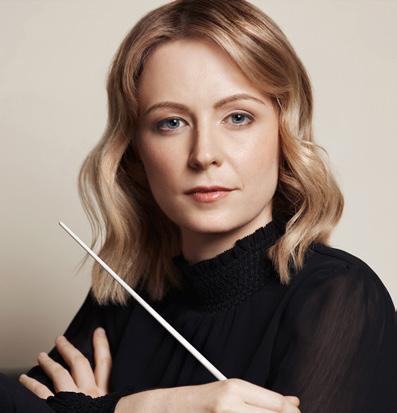
Formed in 1891 as the Scottish Orchestra, the company became the Scottish National Orchestra in 1950, and was awarded Royal Patronage in 1977. The Orchestra’s artistic team is led by Danish conductor Thomas Søndergård, who was appointed RSNO Music Director in October 2018, having previously held the position of Principal Guest Conductor. Hong Kong-born conductor Elim Chan succeeds Søndergård as Principal Guest Conductor.

The RSNO performs across Scotland, including concerts in Glasgow, Edinburgh, Dundee, Aberdeen, Perth and Inverness. The Orchestra appears regularly at the Edinburgh International Festival and the BBC Proms, and has made recent tours to the USA, China and Europe.
The Orchestra is joined for choral performances by the RSNO Chorus, directed by Stephen Doughty. The RSNO Chorus evolved from a choir formed in 1843 to sing the first full performance of Handel’s Messiah in Scotland. Today, the RSNO Chorus is one of the most distinguished large symphonic choruses in Britain. The Chorus has performed nearly every work in the standard choral repertoire, along with contemporary works by composers including John Adams, Howard Shore and Sir James MacMillan.
The RSNO has a worldwide reputation for the quality of its recordings, receiving a 2020 Gramophone Classical Music Award for Chopin’s Piano Concertos (soloist: Benjamin Grosvenor), conducted by Elim Chan; two Diapason d’Or awards for Symphonic Music (Denève/Roussel 2007; Denève/Debussy 2012) and eight GRAMMY Awards nominations. Over 200 releases are available, including Thomas Søndergård conducting Strauss (Ein Heldenleben, Der Rosenkavalier Suite) and Prokofiev (Symphonies Nos1 and 5), the complete symphonies of Sibelius (Gibson), Prokofiev (Järvi), Bruckner (Tintner) and Roussel (Denève), as well as further discs championing the music of William Grant Still (Eisenberg), Xiaogang Ye (Serebrier) and Thomas Wilson (Macdonald).
The RSNO’s pioneering learning and engagement programme, Music for Life, aims to engage the people of Scotland with music across key stages of life: Early Years, Nurseries and Schools, Teenagers and Students, Families, Accessing Lives, Working Lives and Retired and Later Life. The team is committed to placing the Orchestra at the centre of Scottish communities via workshops and annual residencies.
FIRST VIOLIN
Lena Zeliszewska
ASSOCIATE LEADER
Tamás Fejes
ASSISTANT LEADER
Patrick Curlett
Evgeny Makhtin
Wen Wang
Caroline Parry
Liam Lynch
Ursula Heidecker Allen
Susannah Lowdon
Elizabeth Bamping
Lorna Rough
Alan Manson
Nicole Bates
Colin McKee
SECOND VIOLIN
Jacqueline Speirs
ASSOCIATE PRINCIPAL
Marion Wilson
Paul Medd
Anne Bünemann
Nigel Mason
Robin Wilson
Harriet Hunter
Emily Nenniger
Sophie Lang
Kirstin Drew
Eddy Betancourt
Seona Glen
VIOLA
Tom Dunn
PRINCIPAL
Felix Tanner
Susan Buchan
Matt Johnstone
Maria Trittinger
Katherine Wren
Francesca Hunt
Lisa Rourke
Claire Dunn
Elaine Koene
CELLO
Betsy Taylor
ASSOCIATE PRINCIPAL
Kennedy Leitch
Rachael Lee
Sarah Digger
Robert Anderson
Gunda Baranuaskaitė
Susan Dance
Miranda Phythian-Adams
DOUBLE BASS
Nicholas Bayley
GUEST PRINCIPAL
Michael Rae
Moray Jones
Andreas Arder
Chris Sergeant
Kirsty Matheson
FLUTE
Katherine Bryan
PRINCIPAL
June Scott
Alyson Frazier
OBOE
Adrian Wilson
PRINCIPAL
Peter Dykes
Henry Clay
PRINCIPAL COR ANGLAIS
CLARINET
Maria Gomes
GUEST PRINCIPAL
Rebecca Whitener
Duncan Swindells
PRINCIPAL BASS CLARINET
SAXOPHONE
Kyle Horch
Lewis Banks
Gareth Brady
BASSOON
David Hubbard
PRINCIPAL
Luis Eisen
Anna Mary Hubbard
HORN
Alexander Boukikov
GUEST PRINCIPAL
Alison Murray
Andrew McLean
David McClenaghan
Martin Murphy
TRUMPET
Christopher Hart
PRINCIPAL
Katie Smith
Jack Wilson
Mark Elwis
TROMBONE
Dávur Juul Magnussen
PRINCIPAL
Lance Green
Alastair Sinclair
PRINCIPAL BASS TROMBONE
TUBA
John Whitener
PRINCIPAL
TIMPANI
Paul Philbert
PRINCIPAL
PERCUSSION
John Poulter
ASSOCIATE PRINCIPAL
Philip Hague
Jonathan Chapman
Julian Wolstencroft
Peter Murch
HARP
Pippa Tunnell
CELESTE
Lynda Cochrane
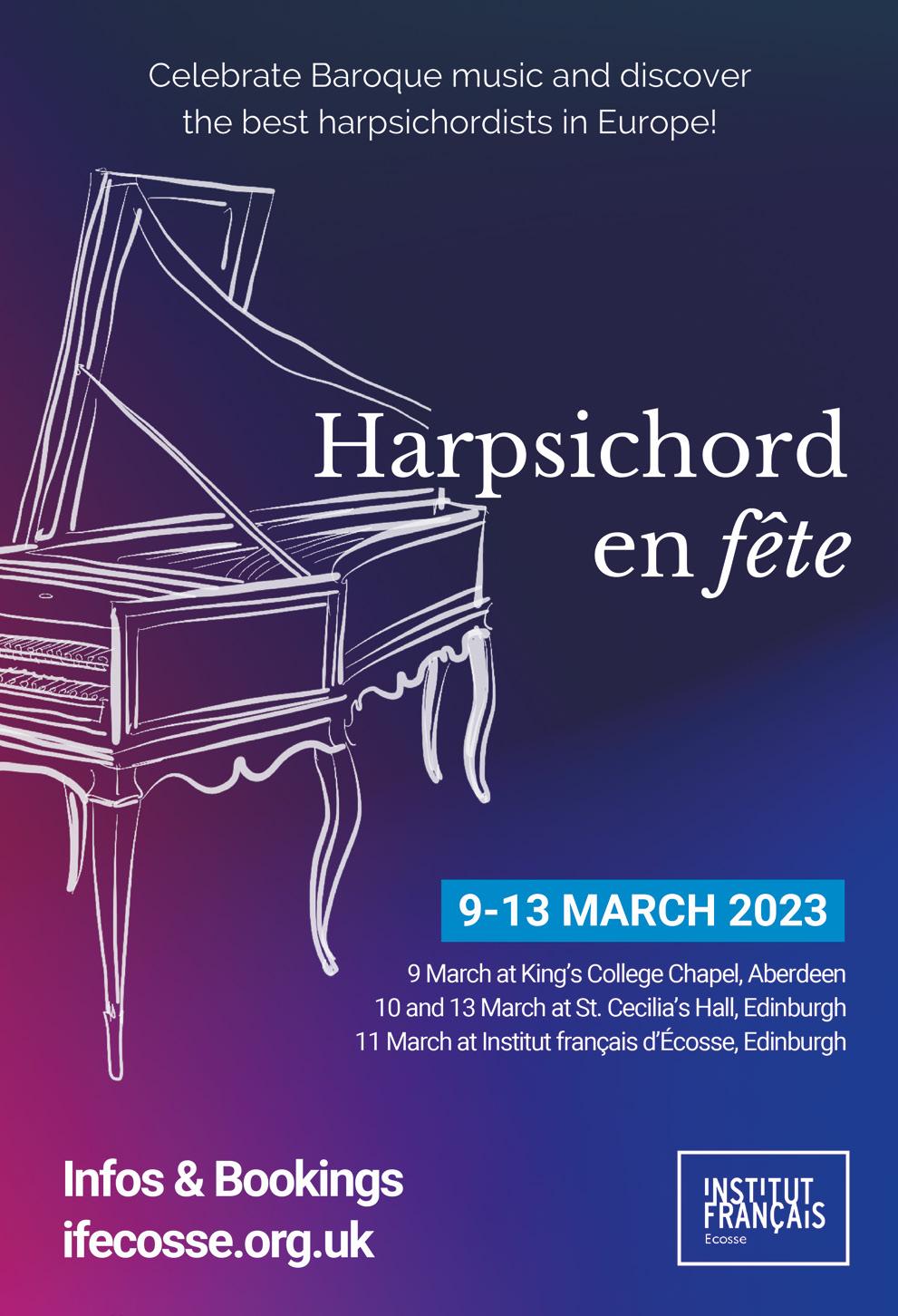
I am honoured and extremely proud to be Music Director of the RSNO. It is through the continued generosity of you, our friends, donors and supporters, that we can continue to achieve and realise the most ambitious goals of the Orchestra.
One of the wonders of the RSNO is how it brings high-quality music not only to concert halls, but to the wider community. From hospital settings to care homes, from our Astar app for families with newborns to our National Schools Concert Programme, our music touches so many lives in Scotland and beyond.
RSNO Benefactors are beacons of philanthropic inspiration, providing truly transformative financial support to the Orchestra that enables us to build and deliver long-term strategic plans. Benefactors share the RSNO’s vision
Your support is the cornerstone of all that we do, as it allows us to continually build and develop.
Thank you for being part of this wonderful Orchestra’s journey, as we adapt and grow towards a bright future.
Thomasfor orchestral music and work with us to drive the organisation forward, helping us to realise our future plans and ambitions.
Sir Ewan and Lady Brown
Gavin & Kate Gemmell
The RSNO Conductors’ Circle is an inspirational group of individual supporters at the heart of the RSNO’s Individual Giving programme. Our members’ annual philanthropic gifts enable us to realise the Orchestra’s most ambitious goals. Conductors’ Circle members support inspirational concert performances for our audiences alongside transformational education programmes in communities across Scotland, via our ground-breaking initiative Music for Life.
The RSNO is very grateful for the continued support of its Conductors’ Circle:
Ardgowan Charitable Trust
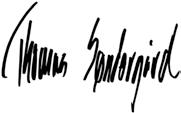
Geoff and Mary Ball
Stina Bruce Jones
Ian and Evelyn Crombie
Carol Grigor and the Trustees of Dunard Fund
Kenneth and Julia Greig
Ms Chris Grace Hartness
Kat Heathcote and Iain Macneil
Bruce and Caroline Minto
David and Alix Stevenson
Eric and Karen Young
We would also like to thank those generous donors who wish to remain anonymous.
For more information on becoming a Benefactor or part of the Conductors’ Circle, please contact Jenny McNeely at jenny.mcneely@rsno.org.uk
From musical activities in schools with the musicians of the future to working in community venues across Scotland, as a Chair Patron you are enabling RSNO musicians to explore the many facets of their art and the positive impact it has on people’s lives. Supporting an individual musician puts you at the heart of the RSNO family. You’re connected directly to the musicians on stage and get to enjoy privileged behind-the-scenes access. RSNO musicians truly appreciate our Chair Patrons and enjoy developing personal relationships with our supporters.
Assistant Conductor
Kellen Gray
The Solti Foundation Chair
First Violin
Maya Iwabuchi LEADER
Sharon Roffman LEADER
Dunard Fund Chair
Tamás Fejes ASSISTANT LEADER
The Bill and Rosalind Gregson Chair
Patrick Curlett
ASSISTANT PRINCIPAL
The RSNO Circle Chair
Alan Manson
The Hugh and Linda Bruce-Watt Chair
Elizabeth Bamping
The WL and Vera Heywood Chair
Ursula Heidecker Allen
The James and Iris Miller Chair
Lorna Rough
The Hilda Munro Chair
Second Violin
Marion Wilson
ASSOCIATE PRINCIPAL
The Nigel and Margot Russell Chair
Sophie Lang
The Ian and Evelyn Crombie Chair
Viola
Tom Dunn PRINCIPAL
The Cathy & Keith MacGillivray Chair
Lisa Rourke SUB PRINCIPAL
The Meta Ramsay Chair
Francesca Hunt
The Rolf and Celia Thornqvist Chair
Cello
Betsy Taylor
ASSOCIATE PRINCIPAL
The Maxwell Armstrong Chair
Kennedy Leitch
ASSISTANT PRINCIPAL
The David and Anne Smith Chair
Rachael Lee
The Christine and Arthur Hamilton Chair
Double Bass
Michael Rae
James Wood Bequest Fund Chair
With thanks to the Gregor Forbes John Clark Chair for its support of the RSNO Double Bass section Flute
Katherine Bryan PRINCIPAL
The David and Anne Smith Chair
Helen Brew ASSISTANT PRINCIPAL
The Gordon Fraser Charitable Trust Chair
Oboe
Adrian Wilson PRINCIPAL
The Hedley Wright Chair
Peter Dykes
ASSOCIATE PRINCIPAL
Witherby Publishing Group
Charitable Trust Chair
Cor Anglais
Henry Clay PRINCIPAL
In memory of a dear friend, Fiona H
Bassoon
David Hubbard PRINCIPAL
The James and Morag Anderson Chair
Horn
Christopher Gough PRINCIPAL
The Springbank Distillers Chair
Martin Murphy
ASSISTANT PRINCIPAL
The John Mather Trust’s Rising Star Chair
Alison Murray
ASSISTANT PRINCIPAL
Mr & Mrs Pierre and Alison Girard
David McClenaghan
The J & A Mitchell Chair
Trumpet
Christopher Hart PRINCIPAL
Ms Chris Grace Hartness
Trombone
Dávur Juul Magnussen
PRINCIPAL
The Mitchell’s Glengyle Chair
Lance Green
ASSOCIATE PRINCIPAL
The William Cadenhead Chair
Timpani
Paul Philbert
Ms Chris Grace Hartness
Percussion
John Poulter
ASSOCIATE PRINCIPAL
The Dot and Syd Taft Chair
Library and Orchestra
Assistant
Xander van Vliet
The Hilda Munro Chair
We would like to acknowledge the generous contribution of Mr Hedley Wright in supporting the RSNO Chair Patron Programme.
Our Learning and Engagement activity is structured around our Music for Life programme. From apps for babies to concerts and workshops for school children, and lunchtime concerts for older adults, the range of projects is vast. As a Patron, you will have access to our projects to bring you closer to the communities we serve across Scotland.
William Brown, W.S.
Neil and Nicola Gordon
Professor Gillian Mead, FRSE
Mr Maurice Taylor CBE
RSNO Principal Oboe, Adrian Wilson
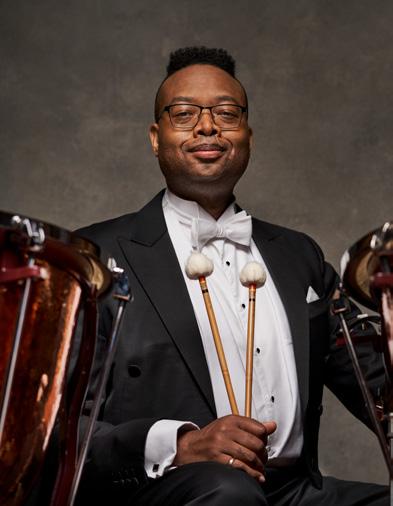
Witherby Publishing Group Charitable Trust
The RSNO is dedicated to bringing new works and outstanding new talent to audiences across Scotland. Our New Works Patrons contribute a significant legacy to orchestral music that extends beyond the RSNO, providing new music for orchestras and audiences around the world – for generations to come.
New Works Patron
Susie Thomson
We are also grateful to those who give but wish to remain anonymous.
If you would like more information or would like to discuss how you can become part of the RSNO Family of Supporters, please contact Jenny McNeely, Head of Individual Giving and Partnerships, at jenny.mcneely@rsno.org.uk
We would like to thank all those who have donated to our new Play Your Part Appeal. The generosity of our supporters at this time is deeply appreciated.
Leave


We all have special Musical Memories. It could be learning to play an instrument when you were a child, or a special piece of music that just left you breathless the first time you heard the Orchestra play it. Maybe it was seeing a soloist you had always wanted to hear, or just a great concert shared with friends. Memories such as these make music such an important part of our lives.
Leaving a gift to the RSNO in your will is the single most important way you can help us to make music and to create memories. Your legacy will support the work of the Orchestra for years to come, ensuring that we can continue to bring great music to a new generation of children, young people and adults right across Scotland. It is easy to leave a gift. After you have made provisions for family and friends, please think of the Orchestra.
Your gift is important to us and to everyone in Scotland who enjoys music. Contact your solicitor to draft a will or add a codicil to your current will.
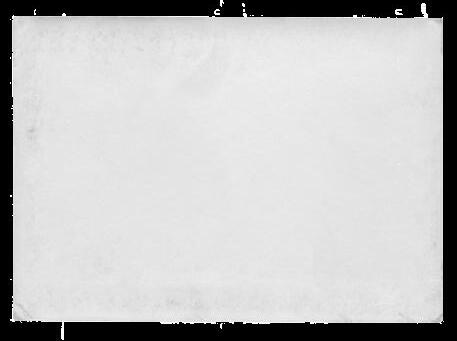
If your estate is subject to inheritance tax, a gift to a charity, such as the RSNO, is tax-free and will reduce the amount of tax payable to the Government. Please ask your solicitor for details.
For more information please visit rsno.org.uk/memories
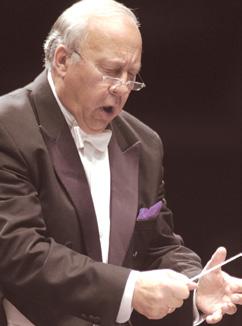
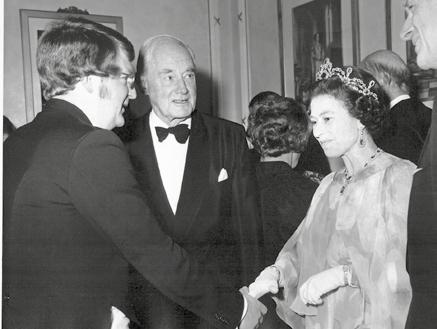
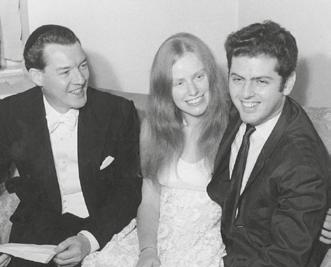
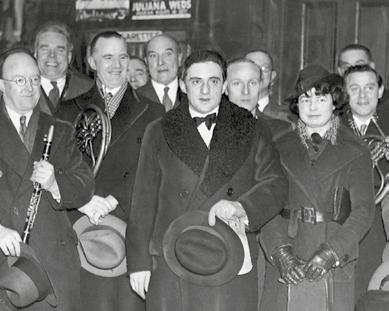
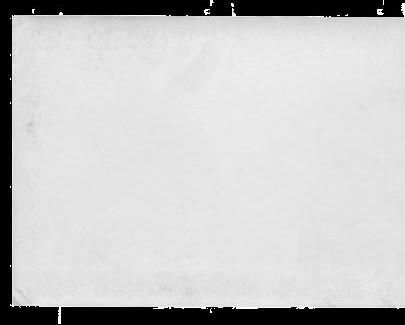
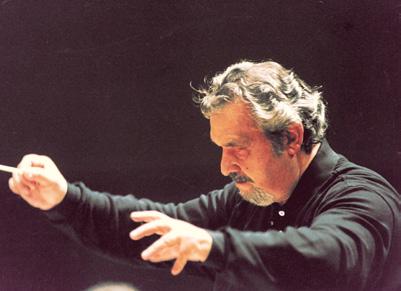

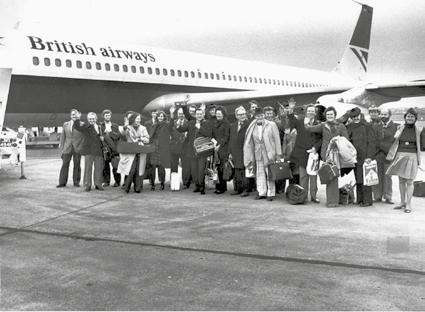
If you would like to discuss this further, please contact Torran McEwan, Individual Giving and Partnerships Officer, in the strictest confidence, at torran.mcewan@rsno.org.uk
To the many among you who have pledged to leave a gift already – thank you.
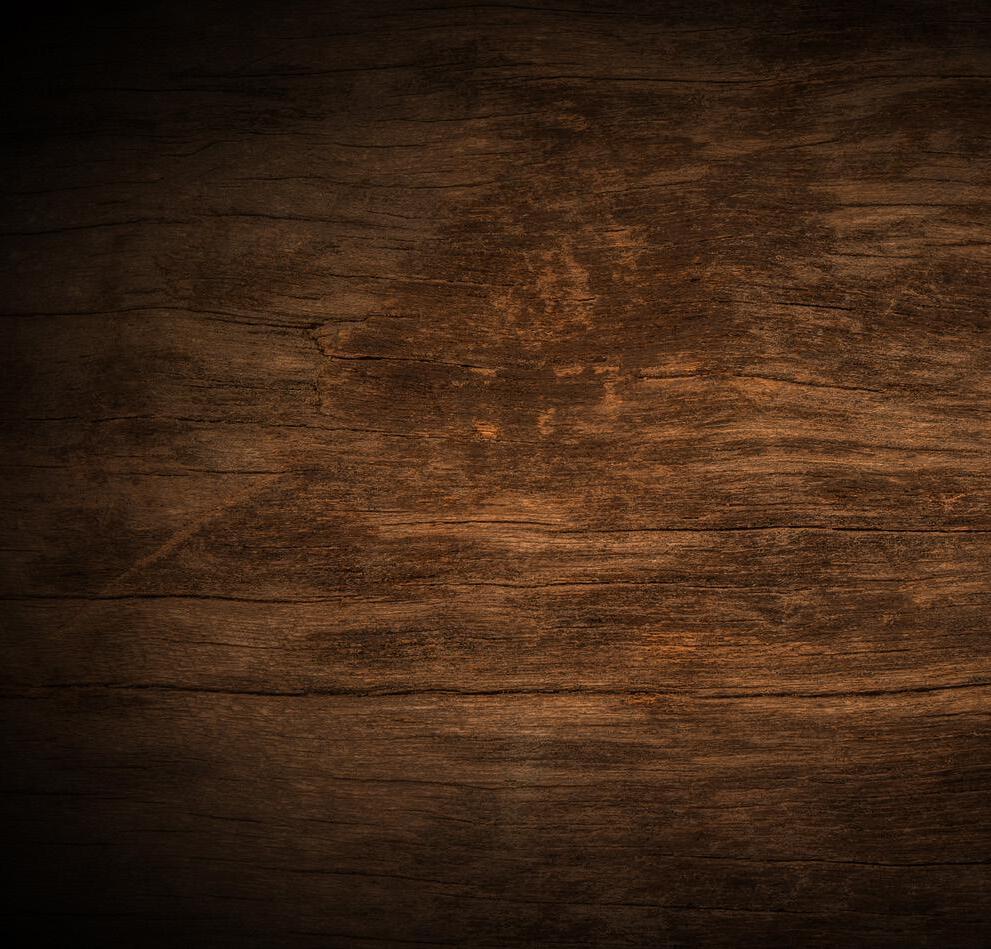

a gift to the RSNO and ensure future generations can create their own Musical Memories of the Royal Scottish National Orchestra.
Charitable trusts and foundations have a distinguished history of supporting the RSNO, both on and off stage. From one-off donations for specific projects to multi-year funding for our flagship outreach initiatives, including the National Schools Concert Programme and Young Creatives, every grant in support of our work is truly appreciated. We are grateful to the following trusts and foundations for their generosity:
Aberdeen Endowments Trust
Alexander Moncur Trust
Alma & Leslie Wolfson Charitable Trust
Balgay Children’s Society
Boris Karloff Charitable Foundation
Castansa Trust
CMS Charitable Trust
Cookie Matheson Charitable Trust
Cruach Trust
Cruden Foundation
David and June Gordon Memorial Trust
D’Oyly Carte Charitable Trust

Dunclay Charitable Trust
Educational Institute of Scotland
Edgar E Lawley Foundation
Ettrick Charitable Trust
Fenton Arts Trust
Forteviot Charitable Trust
Gaelic Language Promotion Trust
Gannochy Trust
Gordon Fraser Charitable Trust
Harbinson Charitable Trust
Hugh Fraser Foundation
Idlewild Trust
James Wood Bequest Fund
Jean & Roger Miller’s Charitable Trust
Jennie S Gordon Memorial Foundation
Jimmie Cairncross Charitable Trust
John Mather Charitable Trust
John Scott Trust Fund
Jones Family Charitable Trust
JTH Charitable Trust
Leach Family Charitable Trust
Leng Charitable Trust
Mary Janet King Fund
McGlashan Charitable Trust
McLay Dementia Trust
MEB Charitable Trust
Meikle Foundation
Mickel Fund
Murdoch Forrest Charitable Trust
Nancie Massey Charitable Trust
Noël Coward Foundation
Northwood Charitable Trust
P F Charitable Trust
Pump House Trust
Q Charitable Trust
Ronald Miller Foundation
R J Larg Family Trust
Russell Trust
Scops Arts Trust
Scott Davidson Charitable Trust
Solti Foundation
Souter Charitable Trust
Stevenston Charitable Trust
Sylvia Aitken Charitable Trust
Tay Charitable Trust
Thomson Charitable Trust
Thriplow Charitable Trust
Tillyloss Trust
Vaughan Williams Foundation
WA Cargill Fund

Walter Craig Charitable Trust
Walter Scott Giving Group
Walton Foundation
Wavendon Foundation
William Syson Foundation
William S Phillips Fund
Zich Trust
We are also grateful to a number of trusts that wish to stay anonymous.
If you would like more information about our work and how you can make a difference, please contact Naomi Stewart, Head of Trusts and Projects, at naomi.stewart@rsno.org.uk
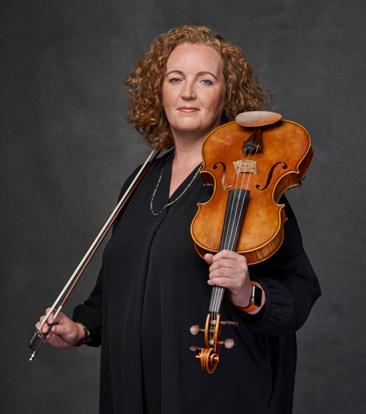

The Circle is a vital part of the RSNO family. Our community of music-lovers inspire and support us. Supporting us by joining the Circle will help us to bring music to so many people, from our Learning and Engagement programmes to our brand-new digital performances. As part of our community and family, we will keep in touch with our exclusive magazine Inner Circle, our Circle member webpage and invitations to special events throughout the year.
To find out more about joining the Circle please visit rsno.org.uk/circle or get in touch with Torran McEwan, Individual Giving and Partnerships Officer, at torran.mcewan@rsno.org.uk
To all our existing Circle members, thank you. Thank you for your unwavering support that allows us to continue sharing the joy of music.
Virtuoso
Ms Catherine Y Alexander
Mrs A M Bennett
Mr Alan and Mrs Carolyn Bonnyman
Dame Susan and Mr John Bruce
Mrs Stina Bruce-Jones
Stephen and Morny Carter
Francesca and Eoghan Contini Mackie
Sir Sandy and Lady Crombie
Gavin and Kate Gemmell
Dr M I and Mrs C R Gordon
Scott and Frieda Grier
Judith and David Halkerston
Iain MacNeil and Kat Heathcote
Miss A McGrory
Miss M Michie
Mr James Miller CBE
Nicholas and Alison Muntz
Meta Ramsay
Mr George Ritchie
Mr P Rollinson
Mr and Mrs W Semple
Mr Ian Taft
Claire and Mark Urquhart
Raymond and Brenda Williamson
Mr Hedley G Wright
Symphony
Mr Anderson
Mr W Berry
Mr John Brownlie
Miss L Buist
Mr and Mrs J K Burleigh
Mrs E Gibb
Mr I Gow
Mr J D Home
Mrs J Kennedy
Mrs A Lamont
Mr I C MacNicol
Professor J and Mrs S Mavor
Mrs McQueen
Mrs A McQueen
Morag Millar
Mr Miller
Mrs A Morrison
Graham and Elizabeth Morton
Mr and Mrs David Robinson
Mr D Rogerson
Mrs Ann M Stephen
Mr Alistair M and Mrs Mandy Struthers
Mr and Mrs M Whelan
Concerto
Dr K Chapman and Ms S Adam
Mr A Alstead
Mr N Barton
Miss D Blackie
Mr L Borwick
Neil and Karin Bowman
Dr C M Bronte-Stewart
Dr F L Brown
Mr and Mrs Burnside
Ms H Calvert
Mr A Campbell
Sir Graeme and Lady Catto
Mr R Cavanagh
Myk Cichla
Dr J Coleiro
Ms R Cormack
Mr and Mrs B H Cross
Christine and Jo Danbolt
Mr P Davidson
Mr J Diamond
Mr S Dunn
Mr C Ffoulkes
Mr and Mrs M Gilbert
Professor J R and Mrs C M Gray
Mrs S Hawthorn
Richard and Linda Holden
Mr N Jack
Ms H Kay
Mr and Mrs W Kean
Mrs M King
Norman and Christine Lessels
Mr R M Love
Mr D MacPherson
Mr R G Madden
Mrs K Mair
Mr and Mrs Marwick
Mr S Marwick
Mr and Mrs G McAllister
Ms M McDougall
Mr Rod McLoughlin
Mrs B Morinaud
Mr A Morrison
Dr and Mrs D Mowle
Dr C C and Mr K R Parish
Mr I Percival
Mr and Mrs D Pirie
Ms A and Miss I Reeve
Mrs E Robertson
Miss L E Robertson
Mr D Rogerson
Ross family
Dr and Mrs G K Simpson
Mr and Mrs A Stewart
Mrs M Stirling
Mr G Stronach
Dr G R Sutherland
Mr I Szymanski
Mr and Dr Tom Thomson
Mr J B and Mrs M B Watson
Mr and Mrs D Weetman
Mrs Wigglesworth
Mr and Mrs Zuckert
Sonata
Ms S Ace
Mr K Allen
Mrs P Anderson
Ms D Baines
Mr O Balfour
Mr N Barton
Dr A D Beattie
Mrs H Benzie
Mr R Billingham
Dr and Mrs Blake
Lord and Lady Borthwick
Rev P Boylan
John Bradshaw and Shiona Mackie
Mr and Mrs Bryan
Lady J Bute
Mrs C Campbell
Miss S M Carlyon
Mr J Claxon
Lady Coulsfield
Adam and Lesley Cumming
Ms K Cunningham
Mr F Dalziel and Mrs S Walsh
Dr J K and Mrs E E Davidson
Mr and Mrs K B Dietz
Mrs C Donald
J Donald and L Knifton
Ms P Dow
Mrs P du Feu
Mr John Duffy
Mr and Mrs M Dunbar
Mr R M Duncan
Brigadier and Mrs C C Dunphie
Mrs E Egan
Mr R Ellis
Miss L Emslie
Mr R B Erskine
Dr E Evans
Mr D Fraser
Mr D and Mrs A Fraser
Mr D Frew
Ms J Gardner
Dr P and Dr K Gaskell
Mr W G Geddes
Mrs M Gibson
Mr D Gibson
Mr and Mrs A Gilchrist
Mrs M Gillan
Mr R M Godfrey
Mrs J K Gowans
Dr J and Mrs H Graham
Professor and Mrs A R Grieve
Mr and Mrs G Y Haig
Lord and Lady Hamilton
Dr P J Harper
Mrs I Harris
Dr N Harrison
Mr and Mrs R J Hart
Mr D Hartman
Ms V Harvey
P Hayes
Dr and Mrs P Heywood
Bobby and Rhona Hogg
Ms J Hope
Mr R Horne
Mr and Mrs F Howell
Mr A Hunter
Mrs A S Hunter
Professor R N Ibbett
Ms J Incecik
Mr A Kilpatrick
Professor and Mrs E W Laing
Ms K Lang
Mr J P Lawson
Mr and Mrs J Lawson
G E Lewis
Dr D A Lunt
Mrs Lesley P Lyon
Mr and Mrs R MacCormick
Mr D MacDonald
Mr and Mrs MacGillivray
Lady Lucinda L Mackay
Dr A K and Mrs J C Martin
Mr and Mrs J Martin
Mr and Mrs D H Marwick
Ms S McArthur
Mr G McCormack
Mrs L McCormick
Mrs M McDonald
Mr M McGarvie
Dr Colin McHardy
Dr A H McKee
Mr Patrick McKeever
Mr G McKeown
Ms H L McLaren
Mrs E McLean
Mr D McNaughton
Professor Mead
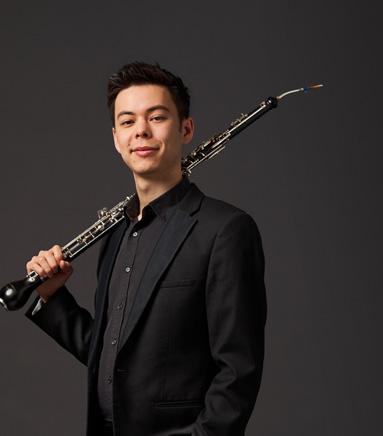
Mr and Mrs B Mellon
Mr G Millar
Mr I Mills
Mrs P Molyneaux
Mr B Moon
Mr R Morley
Mr B and Mrs C Nelson
Mr and Mrs K O’Hare
Professor Stephen Osborne and Frank Osborne
Mr and Mrs K Osborne
Dr G Osbourne
Ms S Park
Mr R Parry
Misses J and M Penman
Dr M Porteous
Mr J W Pottinger
Miss J A Raiker
Mr W Ramage
Mr M Rattray
Ms F Reith
Mrs D A Riley
Dr and Mrs D Robb
Mrs A Robertson
Mr I Robertson
Mr H and Mrs J Robson
Ms A Robson
Mrs E K Ross
F Scott
Mrs S Scott
Mrs J Shanks
Mr J A Shipley
Dr M J and Mrs J A Shirreffs
Mr E Simmons
Dr Colin and Mrs Kathleen Sinclair
Mr M Smith
Mr M J Smith
Mrs E Smith
Mr M A Snider
Dr and Mrs B Stack
Mrs Lorna Statham
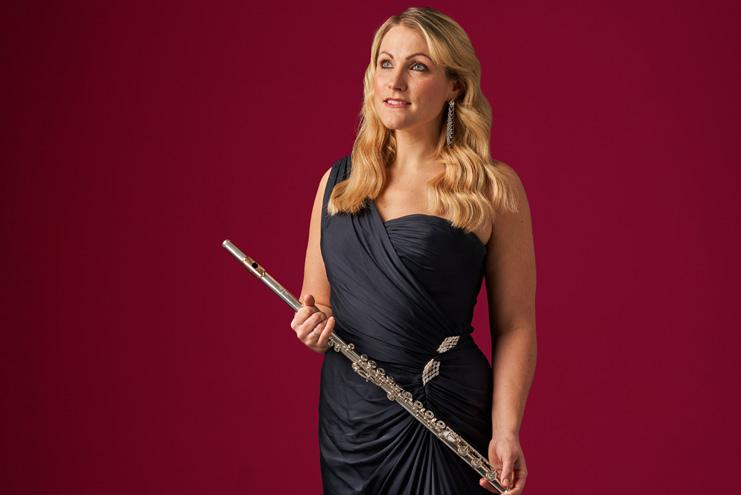
Mrs T Stevenson
Rev N and Mr R Stewart
Mrs R F Stewart
Mr and Mrs Struthers
Mr and Mrs B Tait
Dr and Mrs T Thomson
Mr C Turnbull
Dr S Tweedie
Dr Morag Ward
Mr Nelson and Mrs Barbara Waters
Mr W Watters
Dr and Mrs T Weakley
Mrs V Wells
Mr G West
Miss M Whitelaw
Dr and Mrs D T Williams
Mr D Woolgar
Mr R Young
Mr C and Mrs L Yule
Thank you to all our members of the Circle, including those who wish to remain anonymous. Every one of you makes a real difference.



CORPORATE
PRINCIPAL
PRINCIPAL

BROADCAST
If you would like more information about sponsorships, corporate partnerships or fundraising events with the RSNO, please contact Jenny McNeely, Head of Individual Giving and Partnerships, at jenny.mcneely@rsno.org.uk

PATRON
Her Late Majesty The Queen
RSNO BOARD OF DIRECTORS
Elected Directors
Dame Susan Bruce DBE
CHAIR
John Heasley
HONORARY TREASURER
Kat Heathcote
Linda Holden
Neil McLennan
Costa Pilavachi
CHIEF EXECUTIVE
Alistair Mackie
Phoebe Connolly
EXECUTIVE ASSISTANT
Nicola Shephard
EXECUTIVE ASSISTANT (MATERNITY LEAVE)
CONCERTS
Dr Ingrid Bols
PLANNING OFFICER
Michael Cameron
DRIVER AND DEPUTY STAGE MANAGER
Emma Hunter
DEPUTY ORCHESTRA MANAGER
Ewen McKay
HEAD OF ORCHESTRA MANAGEMENT
Jim O’Brien
DRIVER AND ORCHESTRA TECHNICIAN
Richard Payne
LIBRARIAN
Tammo Schuelke
HEAD OF PLANNING
Craig Swindells
HEAD OF PRODUCTIONS
Matthias Van Der Swaagh
CONCERTS ADMINISTRATOR
Xander van Vliet
LIBRARY ASSISTANT
Christine Walker
CHORUS MANAGER
LEARNING AND ENGAGEMENT
Andy Stevenson
DIRECTOR OF ENGAGEMENT
Samantha Campbell
HEAD OF ENGAGEMENT (MATERNITY LEAVE)
David Robinson
Gurjit Singh Lalli
Jane Wood
Player Directors
Helen Brew
David Hubbard
Dávur Juul Magnussen
Sophie Lang
Paul Philbert
Lorna Rough
Hannah Gardner Seavey
COMMUNITY AND WELLBEING ENGAGEMENT
COORDINATOR
Chrissie Johnson
PROJECT MANAGER
Rosie Kenneally
LEAD PROJECT MANAGER
Rachel O’Connor
CREATIVE ASSISTANT
Rachel Pyke
PROJECT MANAGER
EXTERNAL RELATIONS
Dr Jane Donald
DIRECTOR OF EXTERNAL RELATIONS
Lisa Ballantyne
PARTNERSHIPS OFFICER
Ian Brooke PROGRAMMES EDITOR
Rosie Clark
EXTERNAL RELATIONS ADMINISTRATOR
Jessica Cowley
MARKETING MANAGER
Carol Fleming
HEAD OF MARKETING
Constance Fraser
COMMUNICATIONS AND MARKETING OFFICER
Torran McEwan
INDIVIDUAL GIVING AND PARTNERSHIPS
OFFICER
Jenny McNeely
HEAD OF INDIVIDUAL GIVING AND PARTNERSHIPS
Mirienne McMillan
SALES OFFICER
Graham Ramage
GRAPHICS AND NEW MEDIA DESIGNER
Kirsten Reid
TRUSTS AND PROJECTS COORDINATOR
Nominated Directors
Cllr Edward Thornley
THE CITY OF EDINBURGH COUNCIL
Company Secretary
Gordon Murray
RSNO COUNCIL
Baroness Ramsay of Cartvale
CHAIR
Ms Ruth Wishart
Dr Naomi Stewart
HEAD OF TRUSTS AND PROJECTS
Sam Stone
INFORMATION SERVICES MANAGER
FINANCE AND CORPORATE SERVICES
Angela Moreland
CHIEF OPERATING OFFICER
Abby Dennison
FINANCE ADMINISTRATOR
Alice Gibson
FINANCE ADMINISTRATOR
Ted Howie
FACILITIES COORDINATOR
Lorimer Macandrew
VIDEO PRODUCER
Sam McErlean
SOUND ENGINEERING INTERN
Irene McPhail
ACCOUNTS AND PAYROLL ASSISTANT
Calum Mitchell
VIDEO PRODUCTION INTERN
Hedd Morfett-Jones
DIGITAL MANAGER
Susan Rennie
FINANCE MANAGER
Jade Wilson
FINANCE ASSISTANT
Royal Scottish National Orchestra 19 Killermont Street
Glasgow G2 3NX
T: +44 (0)141 226 3868
W: rsno.org.uk
Scottish Company No. 27809
Scottish Charity No. SC010702
@rsnoofficial Youtube.com/thersno
